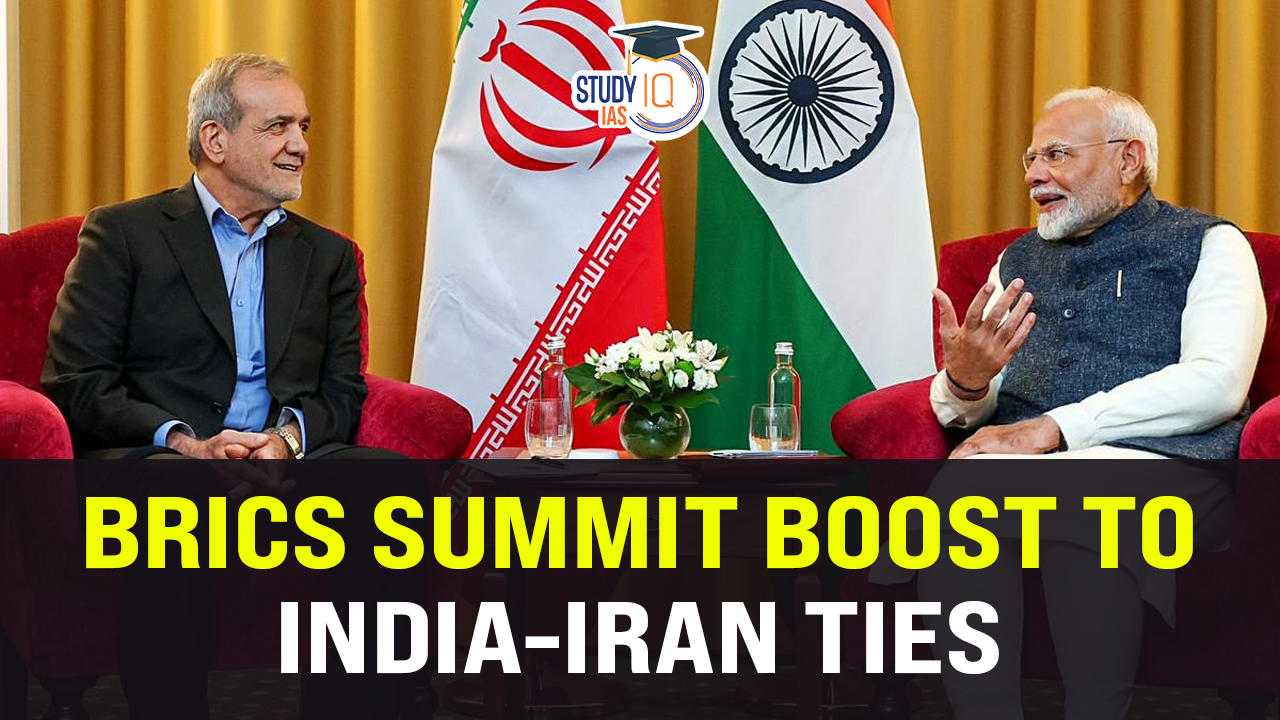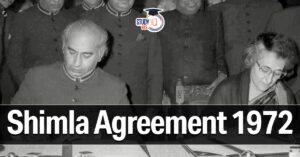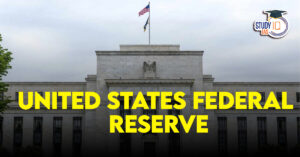Table of Contents
Key Meeting Details
- Historic First Meeting: This was the first meeting between Indian Prime Minister Narendra Modi and Iranian President Masoud Pezeshkian. Both leaders acknowledged the untapped potential in their bilateral relationship.
- Iran’s Recognition of India’s Role: President Pezeshkian praised India’s global stature and its role in facilitating Iran’s 2023 entry into major multilateral organisations like the Shanghai Cooperation Organisation (SCO) and BRICS.
- Focus Areas for Cooperation:
- Chabahar Port: Both nations explored further collaboration at Chabahar Port, critical for India’s connectivity and trade.
- International North-South Transport Corridor (INSTC): Discussions included enhancing connectivity via the INSTC.
| Facts |
|
Opportunities for Enhanced Partnership
Chabahar Port Operations:
- New 10-Year Contract: India and Iran signed a 10-year contract for port operations in May 2024.
- Chabahar port is located outside the Strait of Hormuz which protects India’s trade routes from potential Persian Gulf conflicts.
- Connectivity Projects:
- A 700-km rail link between Chabahar and Zahedan, to connect with Iran’s rail network.
- A planned road link from Zahedan to Zaranj, Afghanistan that will facilitate India’s humanitarian aid to Afghanistan.
- Energy Supply Resumption: Iran met 12% of India’s crude needs before U.S. sanctions curtailed imports. A revived partnership could renew India’s oil and gas imports from Iran.
- Iran-Oman-India Gas Pipeline: Since 1993, Iran and Oman have considered undersea gas pipelines, and an extension to India could be explored.
- Military Cooperation:
- Defence Agreement: India and Iran signed a defence cooperation agreement in 2001, though implementation was hindered by sanctions.
- Possible Collaboration on Defense Technology:
- Iran’s advancements in short- and medium-range missiles, hypersonic missiles, and armed drones may align with India’s defence needs.
- Iran’s recent supply of armed drones to Russia in the Ukraine conflict highlights its capabilities, which could interest India.
- Counterterrorism and Naval Cooperation:
- Joint Counterterrorism Measures: India and Iran could conduct joint exercises and share intelligence to combat terror threats from Pakistan.
- Naval Presence: Port calls and logistical facilities in Iran’s Persian Gulf ports could be mutually beneficial.
India’s Diplomatic Approach
- De-Hyphenated Diplomacy: India’s ability to maintain relations with adversarial nations (e.g., Iran and Israel) positions it uniquely for diplomatic engagements.
- Strategic Autonomy: India’s neutral stance on the Ukraine crisis demonstrated its focus on strategic autonomy, a principle it can apply in its Iran relations.
Challenges to the Bilateral Relationship
- Out-of-Context Comments: Occasional comments, like Iran’s Supreme Leader’s statement on the “sufferings” of Indian Muslims in comparison to Gaza, have risked diplomatic friction.
Conclusion and Future Outlook
- India aims to strengthen ties in West Asia, while Iran is consolidating its diplomatic reach and considers India an essential partner.
- Both countries must prioritise the broader importance of their bilateral relationship over isolated remarks.
- This meeting could serve as a turning point, revitalising the India-Iran partnership with an emphasis on connectivity, energy security, and regional stability.


 Shimla Agreement 1972 to 2025: From Peac...
Shimla Agreement 1972 to 2025: From Peac...
 China's Salami Slicing Tactics
China's Salami Slicing Tactics
 United States Federal Reserve (US Fed)
United States Federal Reserve (US Fed)





















